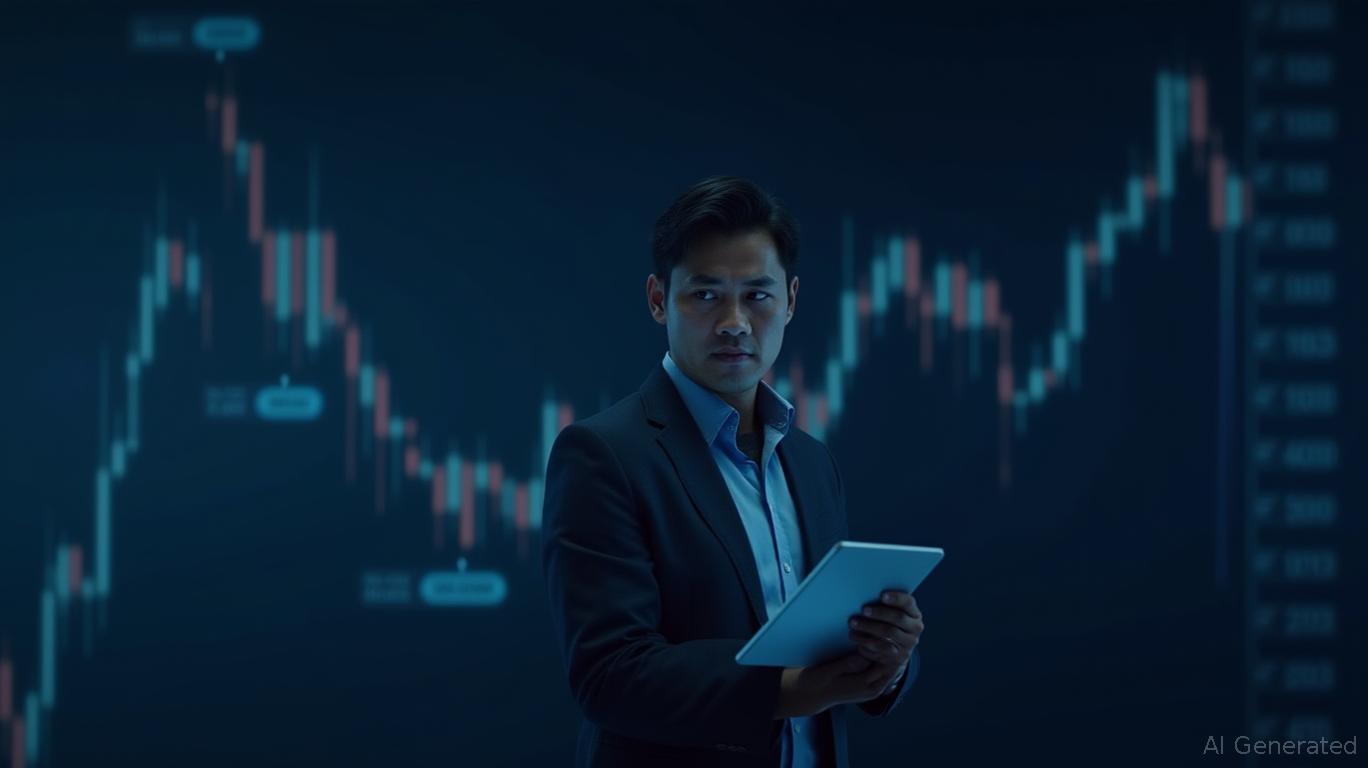AInvest Newsletter
Daily stocks & crypto headlines, free to your inbox
The evolution of algorithmic trading has reached a pivotal moment, driven by advancements in backtesting methodologies and the integration of visual data analysis. As markets grow increasingly complex, investors are turning to tools that combine historical rigor with real-time visual insights to navigate uncertainty. This article explores how these innovations are reshaping investment strategies—and why they matter for both institutional and retail investors.
Backtesting, once a niche practice, has become indispensable for validating trading strategies. By simulating performance against historical data, investors can assess risk-adjusted returns, volatility, and drawdowns—critical metrics for distinguishing luck from skill. Recent studies, such as those leveraging deep learning models, emphasize that backtesting must account for domain-specific metrics like returns, volatility, and liquidity.
Consider the RSI-Adaptive T3 + Squeeze Momentum Strategy, which uses dynamic moving averages and volatility squeezes to identify high-probability entries. A 2024–2025 backtest on BTC/USD (30-minute charts) showed a 47.8% win rate and 2.01 profit factor, with a maximum drawdown of just 5.77%. Such results underscore how rigorous backtesting can transform theoretical models into actionable systems.

Visual data—such as candlestick charts, heatmaps, and portfolio performance tables—are no longer just aesthetic tools. They enable traders to synthesize complex information instantly. For example, the ETF Builder & Backtest System by TradeDots generates a normalized chart plot that scales portfolio value to 100, allowing investors to compare asset performance at a glance.
This system also produces a performance table detailing individual asset returns, annualized growth rates, and total portfolio value. Such clarity is vital in a market where 80% of retail traders fail to beat benchmarks due to emotional decision-making. Visual tools reduce noise and focus attention on what matters: data-driven patterns.
Recent innovations highlight the fusion of backtesting and visual analysis:
1. Fourier For Loop (BackQuant): Uses spectral analysis to detect cyclical patterns, generating buy/sell signals based on predefined thresholds. A 2025 backtest showed it captured 68% of upward trends in the S&P 500.
2. Auto Backtest & Optimize Engine (HALDRO): Tests millions of parameter combinations using a genetic algorithm, ranking strategies by metrics like Sharpe ratio and maximum drawdown.
3. Walk Forward Patterns (dg_factor): Divides historical data into optimization and validation windows, ensuring strategies work across time periods—a safeguard against overfitting.
These tools are not merely technical curiosities. They reflect a shift toward systematic investing, where human intuition is augmented by machine precision. For instance, the Optimal MA Finder by Julien_Eche identifies the best-performing moving average length (e.g., 100-day SMA vs. 200-day EMA) across thousands of permutations, eliminating guesswork.
Despite these advancements, pitfalls remain. Overreliance on historical data can blind investors to structural shifts—such as the rise of ESG investing or AI-driven industries. The ETF Builder's limitation of static allocations, for example, ignores the need for rebalancing in volatile markets.
Moreover, backtesting must account for execution costs. The RSI-Adaptive T3 strategy's simulated $100 per-trade model assumes ideal slippage and commission rates, which real-world markets rarely provide. Investors must stress-test strategies under worst-case scenarios.
For institutional investors:
- Adopt multi-strategy portfolios: Combine momentum-based systems (e.g., T3+Squeeze) with mean-reversion approaches to balance risk.
- Leverage visual dashboards: Platforms like TradingView's Pine Script enable real-time monitoring of signals and risk metrics.
For retail investors:
- Start small: Use demo accounts to test strategies before risking capital.
- Focus on liquidity: High-frequency strategies (e.g., tick-based models) require deep-pocketed traders; consider daily or weekly timeframes if capital is limited.
The marriage of backtesting and visual analytics is rewriting the rules of investing. By grounding decisions in historical rigor and real-time clarity, traders can avoid the emotional traps that derail long-term success. As markets grow more algorithmic, those who master these tools will gain a decisive edge—not just in profitability, but in navigating the inevitable turbulence ahead.
In this new frontier, the question isn't whether to adopt these methods—it's how quickly you can do so without falling prey to their limitations. The data is there; the rest is execution.
Dive into the heart of global finance with Epic Events Finance.

Dec.14 2025

Dec.14 2025

Dec.14 2025

Dec.14 2025

Dec.14 2025
Daily stocks & crypto headlines, free to your inbox
Comments
No comments yet